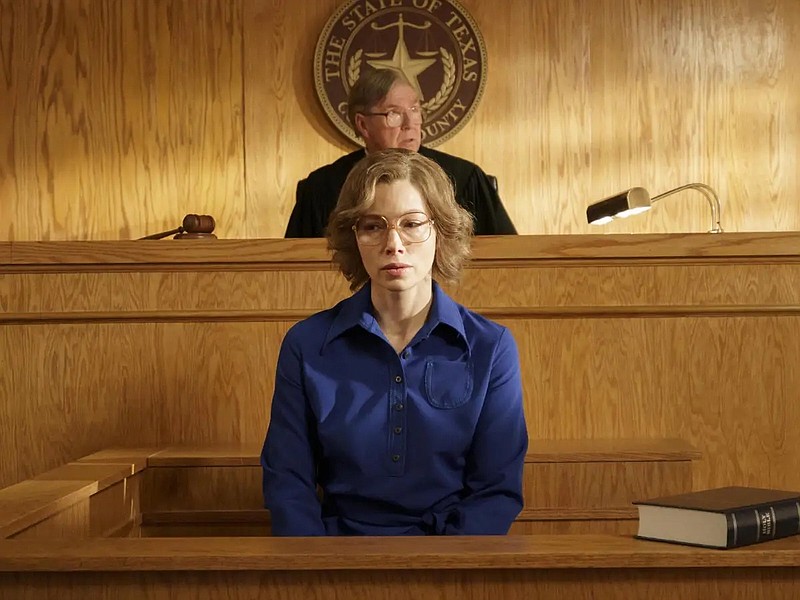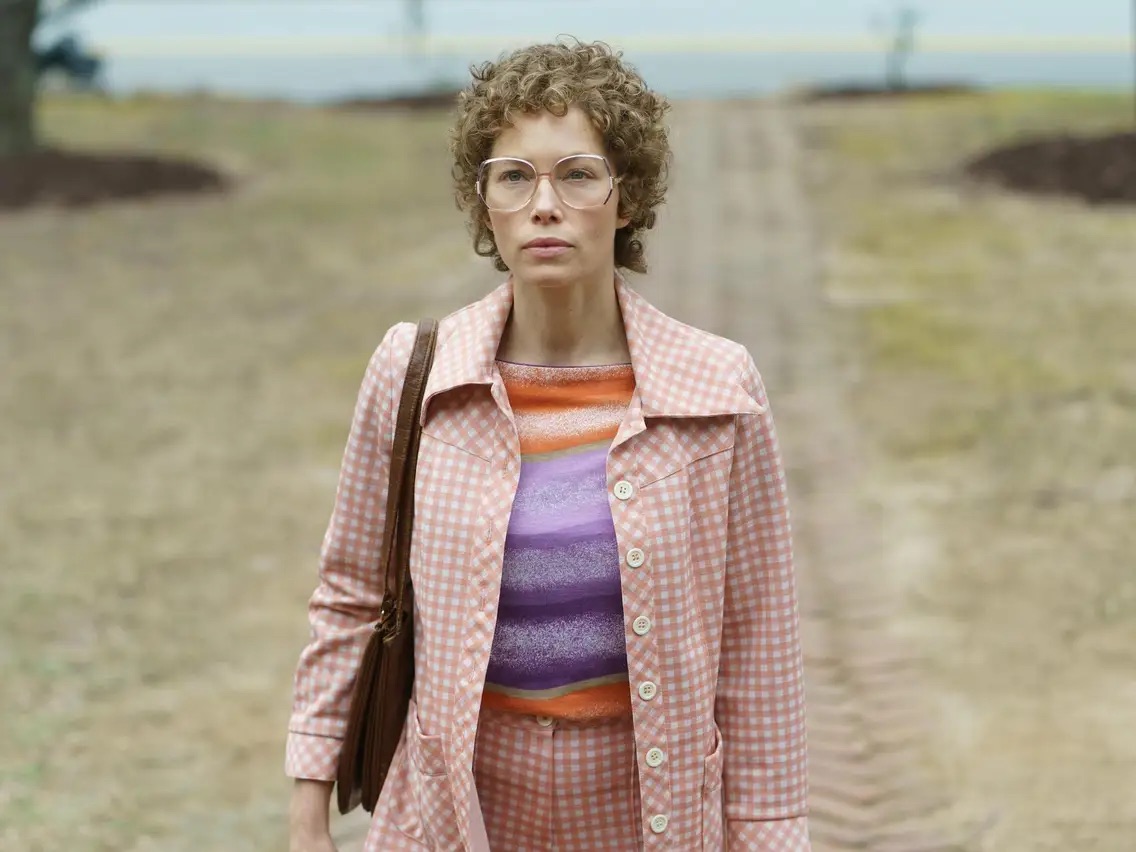When I was a kid, it seemed murder was all around us.
There were the alphabet soup assassinations -- JFK got done just as I was beginning to pull a wider world into focus. My father cried when RFK was shot. My mother cried for MLK.
I remember police artist Otis Rathel's sketch of the suspect who turned out to be Richard Speck. I remember the day Charles Whitman climbed the Texas Tower.
My father used to drive past hitchhiking members of the Manson family on his way to work. My aunt knew Jeffrey MacDonald, the U.S. Army doctor eventually convicted of murdering his pregnant wife and two young daughters while stationed at Fort Bragg.
She thought he was guilty from the get-go, though others disagree. The MacDonald case is the most litigated criminal case in U.S. history and MacDonald, now 79 years old and serving a life sentence, still insists on his innocence.
The theory is that MacDonald tried to make the murder scene look like a Manson-cult copycat killing. Someone painted "PIG" on the bedroom wall in his wife's blood.
A decade later, in Shreveport, the assistant dean of student affairs and assistant associate professor of microchemistry and molecular biology at Louisiana State University Medical Center, who naturally presented as mild-mannered and meticulous, was convicted of bludgeoning his 38-year-old wife to death with a 4-pound sledgehammer. The only real evidence against him were the patterns her blood made on his T-shirt, undershorts, a lamp, the bed's headboard and a lamp.
Cut to Lady MacBeth, at the end of the Scottish play, wandering the castle in a delirium, trying to scrub away an invisible bloodstain, a psychic marker of her guilt.
A co-worker of my mother switched careers and went into real estate. They found her hanging from the rafters in the attic of a house after she met what she thought was a prospective buyer there. The only suspect in the case was a counterfeiter and rapist named James Mitchell "Mike" DeBardeleben, who died in a hospital attached to a federal prison in 2011. DeBardeleben, who was born in Little Rock, was never charged with homicide though he was suspected in at least four others.
(For years, I suspected DeBardeleben was the man who abducted and likely murdered Mary Jimmie "Bobo" Shinn, an art teacher who dabbled in real estate, after she went to meet a prospective client at a house in Magnolia in 1978. But the last I heard, Magnolia police had ruled DeBardeleben out, in part because he wasn't a match for fingerprints found inside Shinn's car. As of late 2022, investigators were looking at the possibility that a local person might have been involved in Shinn's disappearance.)
DABBLED IN MURDER
In my 20s, I dabbled in murder. I've been in houses where people were hacked apart by cartel machetes. I helped track (and debunk) the legend of Henry Lee Lucas. I was a reporter on a story where four men falsely confessed to a massacre of nine people in a Buddhist temple. I've watched courts turn killers loose to kill again.
I know a guy who was what they call a "button man" for the DeCavalcante crime family, the New Jersey mob said to be the inspiration for "The Sopranos." He had two heavily insured wives die in hunting accidents. He had one high-profile hit job where the guy who hired him got the death penalty (later commuted to life) but he skated. He called me up to laugh -- more a high-wheedling nervous giggle -- about that one. He's finally in jail now but I still won't say his name. Maybe after he dies.
There's nothing romantic about murder. It's usually the result of a failure of nerve or a lack of imagination. We're all capable of it; we're even capable of getting away with it. Nearly half of the murders committed in this country go unsolved.
My criminal law professor Cheney Joseph said anyone could get away with murder -- as long as they picked a random victim and waited for the right circumstances. The real world isn't like the cop shows.
Detective work is mostly drudgery, lots of conversations with reluctant witnesses who know little interspersed with time-wasting with people who, for whatever reason, have a desperate need for attention. True detective work is heartbreaking and mostly dull.
So are most murderers.
But not all.
In 1982, Candace "Candy" Montgomery was -- spoiler alert -- acquitted of the murder of Betty Gore, the wife of a man with whom she was having an affair.
She was vivacious. Attractive in a subdued suburban North Texas way. In the HBO miniseries "Love & Death," she's played by Elizabeth Olsen, who sports the same haircut a high school classmate of mine -- a future Ouachita Baptist University cheerleader -- wore in the mid-1970s, which doesn't look that much like the frizzy perm you see in archival photos of Montgomery. (Jessica Biel attempts that hairstyle in "Candy," a Hulu miniseries that explored the same case last year. I haven't seen "Candy.")
Montgomery is still alive and apparently not courting publicity; a 13-year-old Dallas Morning News story reported she moved to Georgia and became a family counselor not too long after she was acquitted. She's 73 years old now and it might be fascinating to hear what she has to say about the resurgence in interest in her case (and no doubt there are journalists and true-crime web sleuths trying to land an exclusive interview with her).
CRIME OF PASSION
The bare bones of the case are that she was bored with her relationship and wanted to have a "safe" affair with Allan Gore, a man she'd met at church and to whom she felt attracted. She approached him and they worked it out, installing certain safeguards to prevent their spouses from finding out. It went on for a while, then they mutually broke it off. Some months later, Gore's wife, Betty, confronted Montgomery about the affair while Montgomery was visiting her at home.
Montgomery's story is that on June 13, 1980 -- a Friday, the week the first "Friday the 13th" movie opened -- Betty attacked her with a 3-foot ax, which Montgomery somehow managed to take from her. Montgomery whacked Gore 41 times -- 28 times in the head. The scene was horrific. And eerie.
Counting from the corner, the Gores' house was the 13th one on the street. Betty's body was discovered about 13 hours after her estimated time of death. Candy Montgomery was arrested 13 days after the murder. On the kitchen table, investigators found Betty's blood on a newspaper opened to the movie page and an ad for "The Shining," the Stanley Kubrick film where Jack Nicholson famously chases Shelley Duvall with an ax.
The body wasn't found right away because Allan Gore was away on a business trip and after spending hours trying to get his wife on the phone, he finally called neighbors and asked them to check in on her. It took two days for the newspapers to find out.
"Teacher hacked to death in Wylie home," a headline in the Sunday Dallas Morning News read. The subhead continued: "A fifth-grade teacher at R.C. Dodd Middle School was hacked to death by an ax-wielding killer who took a shower afterward."
Wylie, where the Montgomerys and the Gores lived, is in the Dallas exurbs, just east of Plano. In 1978, it was a town of 3,700 people. (Now it's about 60,000.)
In 1984, John Bloom -- the Little Rock-raised raconteur who would later find cult-hero fame as his character "Joe Bob Briggs" -- and Jim Atkinson wrote a book, "Evidence of Love," about the case. In 1990, that book was the basis of the TV movie "Killing in a Small Town." Barbara Hershey won an Emmy and Golden Globe award for her portrayal of a character called Candy Morrison. Bloom and Atkinson also have writing credits on "Love & Death," which -- in the first couple of episodes, at least -- tracks the book faithfully -- but aren't credited on "Candy."
I used to have that book, and when I started thinking about writing this story I thought about running down another copy. But before ordering it I discovered Bloom and Atkinson had, in February 1984, written a two-part story for Texas Monthly that basically condensed the book into a reasonable, readable form. (You can find Part One here: arkansasonline.com/57loveanddeath1 and Part Two here: arkansasonline.com/57loveanddeath2.)
Montgomery wasn't an immediate suspect; she was so slight that investigators doubted she could wield the heavy ax. The first thought in Wylie was that a maniacal killer or killers were loose. But there was forensic evidence -- bloody footprints, a fingerprint on the Gores' freezer. Within a week Candy Montgomery had been identified as a suspect.
She pleaded self-defense. She took the stand and said she'd gone to the Gores' that day because Betty's 5-year-old daughter had slept over with the Montgomerys' daughter and needed a swimsuit for a trip to the pool. When Betty confronted her about the affair, Montgomery says, she came at her with an ax. They fought and Montgomery ended up with the ax.
Montgomery's words: "I hit her. I hit her. And I hit her. She fell slowly, almost to a sitting position. I kept hitting her. And hitting her. ... I felt so guilty, so dirty. I felt so ashamed."
A psychiatrist testified an offhand remark by Gore during the fight had probably triggered a repressed memory from Montgomery's childhood, resulting in the rage that fueled the series of ax blows. The jury returned an acquittal in less than five hours.
MURDER AS ENTERTAINMENT
Since November 1993, the National Organization of Parents of Murdered Children has conducted a campaign under the rubric "Murder Is Not Entertainment" to "alert society to its insensitivity toward murder and its aftermath." I remember them picketing theater productions and movies. Mostly they encourage letter writing to the makers of TV programs, toys, games and other means of entertainment.
I am sympathetic to their cause. They want "to eliminate the playing and marketing of violence and murder as forms of entertainment for both children and adults" and "instill the same empathy and respect for victims of murder that society affords victims of other tragedies."
But murder obviously is entertainment. Perhaps it is sick entertainment; perhaps the American -- the human -- fascination with the bitterest of social interactions signals a certain morbid tic in our national psyche.
Perhaps the thrill in reliving a notorious or particularly lurid crime from the remove of nonfiction is purely vicarious. Not only are we all potential victims, but don't we all wonder if the capacity to kill lurks inside us? Goethe said he could not imagine a crime of which, given the proper set of circumstances, he was incapable.
"Love & Death" is not the only true crime series that has my household's attention. We're also watching the Danish series "The Investigation (Efterforskningen)" on HBO Max, and the genuinely fine "Waco: The Aftermath" on Showtime. Not long ago we wrapped up Apple TV+'s "Blackbird," the story of how the serial killer Larry Hall was brought to justice.
One of last year's most overlooked films was Netflix's "The Good Nurse." I find myself admiring the rigor of some of these shows; they are dramatically enhanced and everything is both compressed and heightened, but usually the most incredible details are the true ones.
Maybe it started with Truman Capote's book "In Cold Blood" -- and the subsequent movie -- rightly seen as a landmark of the genre (Capote's controversial journalistic techniques needn't be debated here). Perhaps the original "Dragnet" radio series -- where the names were changed to protect the innocent -- might be a better place to start, but then the turn of the 20th century was rife with Police Gazette-style pulp and exaggerated accounts of the careers of Western gunfighters and lawmen. Indeed, one suspects the true crime genre -- like the poor -- has always been with us.
THE MONSTERS ARE HUMAN
While the horror-movie conventions of supernatural demons and runaway dinosaurs can cause our brains to run with chemicals, the real monsters are invariably human. To know that the monster is imbued with human qualities, that the hand that holds the knife is warmed by human blood is the most frightening thing of all. Crimes are by definition acts of human will; murder is by its nature complicated and calculated; it is a possibility, it is plausible.
Sociopaths exist; there are people out there who lack a conscience.
It is possible to run into them, to share a cup of coffee with them, to become their friend, to marry them and never know that they are totally uninhibited by any feeling of attachment, affection or moral intelligence. There are people devoid of empathy who see you and me as objects to be used or discarded, who would just as soon kill us if it suited their ends.
That is the real horror -- the idea that these real-life monsters walk among us. Certainly their numbers are few, but just as certainly they exist. And their stories are compelling.
And even scarier is that you don't need any particular set of characteristics to commit murder. Sometimes all you need is a moment of rage. And a handy ax.
Email:
pmartin@adgnewsroom.com


